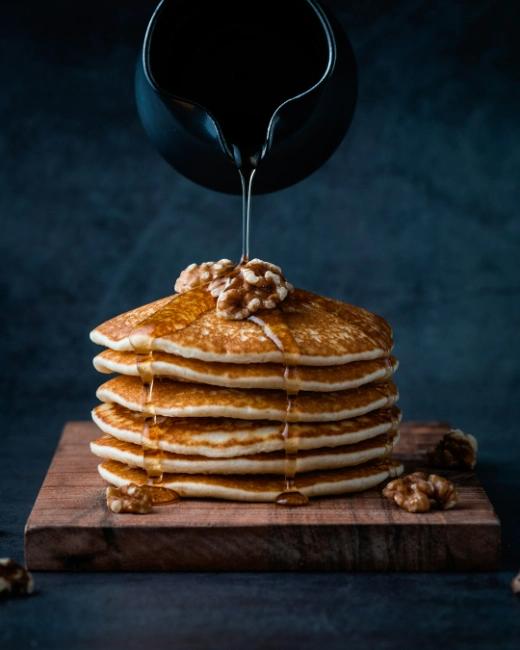How to Make Oat Flour at Home: Easy, Healthy & Budget-Friendly

-
What Is Oat Flour?
-
Why Make Oat Flour at Home?
-
Ingredients and Tools
-
How to Make Oat Flour
-
Is Oat Flour Gluten-Free?
-
Nutrition: Oat Flour vs Wheat Flour
-
Storage Tips
-
How to Use Oat Flour
-
Variations & Pro Tips
-
Frequently Asked Questions
- Can I use oat flour 1:1 instead of wheat flour?
- How many oats do I need for 1 cup of oat flour?
- Can I make oat flour without a blender?
- Is oat flour keto?
-
Why You Should Try Making It Today
-
You Might Also Like
Oat flour is one of those pantry staples that’s surprisingly easy to make at home, but also surprisingly expensive when bought pre-ground. Whether you’re aiming to eat healthier, reduce gluten, or just save money, making homemade oat flour is a no-brainer.
In this post, I’ll walk you through everything you need to know - from how to make oat flour from rolled oats to how to store it, what recipes to use it in, and even how it compares nutritionally to other flours.
What Is Oat Flour?
Oat flour is simply finely ground oats. You can make it from rolled oats, old-fashioned oats, or even quick oats. It’s naturally gluten-free (though more on that later) and has a light, slightly sweet flavor with a soft texture, making it perfect for baking.
Unlike oat bran (which is only the outer layer of the grain), oat flour uses the whole oat, preserving more nutrients and fiber. It’s a fantastic alternative to wheat flour, especially in recipes like muffins, pancakes, and cookies.
Looks so good!
Why Make Oat Flour at Home?
Let’s break it down.
Health: Homemade oat flour retains all the fiber and protein of oats. It’s rich in slow-digesting complex carbs, B vitamins, and beta-glucan, which may help lower cholesterol. If you want to know more, check out this article 9 Health Benefits of Eating Oats and Oatmeal on Healthline.
Cost: Pre-ground oat flour can cost up to 2–3× more than plain oats. On Amazon, 1 lb of Bob’s Red Mill Oat Flour is around $5. Rolled oats? Less than $2.
Freshness: You grind what you need, when you need it. No risk of rancid flour from months-old packages.
Ingredients and Tools
Rolled oats, quick oats, or old-fashioned oats
Blender or food processor
Fine mesh sieve (optional, for extra smoothness)
How to Make Oat Flour
Making oat flour is easier than brewing your morning coffee. Here's how:
Add oats to a blender or food processor – Use about 1-2 cups at a time.
Blend on high speed until the oats turn into a fine flour, about 30–60 seconds.
Check texture – Rub a pinch between your fingers. It should feel soft, like store-bought flour.
Optional: Sift through a mesh strainer to remove larger bits if you need extra-fine flour (great for baking cakes).
Pro tip: 1 cup of rolled oats = ~¾ cup oat flour. But in this case, it's easier to measure it in grams.
Is Oat Flour Gluten-Free?
Oats are naturally gluten-free. However, cross-contamination is a concern during processing. If you have celiac disease or gluten intolerance, always buy certified gluten-free oats.
Learn more about oat-related gluten risks from Beyondceliac.org.
Nutrition: Oat Flour vs Wheat Flour
Let’s compare per 100g:
Nutrient | Oat Flour | All-Purpose Wheat Flour |
|---|---|---|
Calories | 404 kcal | 364 kcal |
Carbohydrates | 67g | 76g |
Fiber | 7g | 2.7g |
Protein | 14g | 10g |
Fat | 9g | 1g |
Oat flour contains more protein, fiber, and healthy fats, making it ideal for blood sugar stability and long-lasting energy.
Storage Tips
Airtight container: Store in a jar or container with a tight-fitting lid.
Cool, dry place: Pantry is fine for up to 2 months.
Fridge or freezer: For longer shelf life (3–6 months), especially in warm climates.
Always label with the date to track freshness.
How to Use Oat Flour
Homemade oat flour works great in many recipes:
Pancakes
Muffins and quick breads
Cookies
Crusts and crisp toppings
Breading for chicken or fish
Thickening soups and stews
It’s best in recipes that don’t rely heavily on gluten for structure.
You can eat this every day!
Variations & Pro Tips
Toasted oat flour: Toast oats in a dry skillet until golden before blending. Adds a deep, nutty flavor.
Steel-cut oats: Can be used, but blending takes longer.
Blender alternatives: Use a coffee grinder or even a mortar and pestle in small batches.
Frequently Asked Questions
Can I use oat flour 1:1 instead of wheat flour?
Not always. In baked goods that need gluten (like yeast breads), oat flour alone won’t rise well. Combine it with wheat flour or a gluten-free mix.
How many oats do I need for 1 cup of oat flour?
About 1 ⅓ cups of rolled oats yield 1 cup of oat flour.
Can I make oat flour without a blender?
Yes. Use a food processor, spice grinder, or even a rolling pin and plastic bag. The texture won’t be as fine, but it works in rustic recipes.
Is oat flour keto?
Not really. With ~67g of carbs per 100g, it’s not suitable for keto diets.
Why You Should Try Making It Today
Homemade oat flour is one of those rare things that’s:
Healthier
Cheaper
Fresher
Zero waste (grind what you need!)
Plus, it's beginner-friendly. If you can press a button on your blender, you can make oat flour.
You Might Also Like
How to Make the Best Chicken Broth
How to Feed Your Sourdough Starter for Perfect Baking Results
What is Blanching? The Ultimate Guide to This Essential Cooking Technique
Boiling Vegetables: Healthy & Tasty Methods for Perfect Results
-
What Is Oat Flour?
-
Why Make Oat Flour at Home?
-
Ingredients and Tools
-
How to Make Oat Flour
-
Is Oat Flour Gluten-Free?
-
Nutrition: Oat Flour vs Wheat Flour
-
Storage Tips
-
How to Use Oat Flour
-
Variations & Pro Tips
-
Frequently Asked Questions
- Can I use oat flour 1:1 instead of wheat flour?
- How many oats do I need for 1 cup of oat flour?
- Can I make oat flour without a blender?
- Is oat flour keto?
-
Why You Should Try Making It Today
-
You Might Also Like


